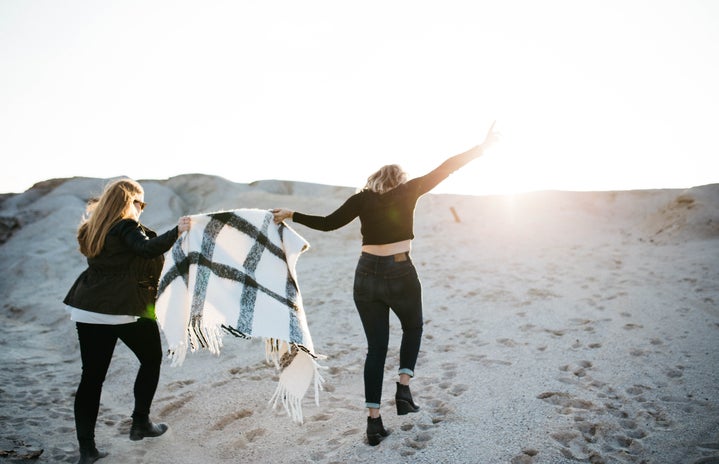I tried to teach myself Korean. Here are the four, free, ways I did it and how successful each one was.
Youtube
The foundation of learning Korean began with Youtube. Out of all of the other ways in which I learned Korean, Youtube is arguably the most effective. Firstly, I carved time out of my day to watch an hour and a half long video called “Learn Hangul in 90 Minutes – Start to Finish [Complete Series]”. This video, taught by an American named Billy who has been living in Korean since 2005, explains very simply the alphabet system in Korean. I like doing things in one go, so I sat down with the video and took notes all at once, but it is also very easy to watch this over a span of a week. The video as a whole is a compilation of several smaller videos, so when one is over, take a break! If you don’t have as much time, there is a five-minute video called, “Learn to Read Korean in Five Minutes (seriously)” in which someone teaches how to read Korean with the shapes of the letters mimicking words in English that you already know. I watched it after the ninety-minute video, but it was still helpful! Next, I watched a Youtube channel called Talk to Me in Korean. They are also a company that sells helpful books on learning Korean better (I haven’t read them but several people have recommended them). The Youtube channel is a short glimpse into what the books are like, and yet this free video version is still very helpful. Each video goes into very specific aspects of the language, such as “The Awkward Way to Say ‘Sick’ in Korean”, as well as videos on Korean culture and interviews with people in Korea who are native English speakers. I find this channel extremely helpful because it goes beyond teaching the alphabet as it gets into words and sentence structure as well as cultural mannerisms. Finally, I started following Korean vloggers. The K-beauty industry is huge, so there is a giant world out there full of makeup, fashion, and lifestyle Youtubers to follow. One day, I typed in “makeup tutorial” into Google Translate. I copy and pasted the Korean words into Youtube, and I was able to find several Youtubers who appealed to me. My favorite is a Youtuber called Kinda Cool. She vlogs her daily life, promotional trips to France, makeup tutorials, room tours, and fashion hauls. She also speaks English, so it is helpful when sometimes she posts English subtitles so that I can connect the Korean words she’s saying to the English words I understand. Watching Korean Youtubers in their daily life speaking is why this is the most challenging out of the other Youtube videos I’ve recommended.
Social Media
Watching Youtube videos requires a commitment to a single video and your full attention. Scrolling through Twitter and Instagram do not. I decided to follow a few K-pop bands, models, and comedians so that occasionally I can test myself from the alphabet that I learned to see if I can say and understand the captions under photos and videos. In addition to that, I could learn slang and ways to type abbreviations in Korean. Unfortunately, this aspect of learning Korean was the least helpful. I may know how to say the words, but I will never be able to know what they mean because the translation option on both Twitter and Instagram are highly inaccurate.
TV Shows
This was the most fun. Korean shows are familiar to a lot of people, whether they are trying to learn Korean or not because they are really interesting and the content of the show is good. Two shows that I will recommend are The Return of Superman, who often put full, hour-long episodes on their Youtube channel, and My English Puberty. The Return of Superman is a reality following famous Korean dads as they raise their young children while their partners leave for the weekend. Not only is this the cutest, funniest show you may ever see, but it is also super helpful for learning Korean. The dads of the show talk to their children in very simple terms, and the kids respond to them in just as simple terms. There are often many scenes when the dads are teaching the children how to read, so it is also a lesson for the viewer. My English Puberty, which is free through the website On Demand Korea, is a reality show where Korean celebrities go to an English language boot camp. It is really helpful because it’s like learning Korean in reverse. While they are learning how to say “Where is the bathroom” in English, you are learning through them how to say it in Korean.
This is for all of the visual learners out there. Along with creating the wedding boards of your dreams, which I just started, by the way, offers thousands of visual aids for learning a new language. I currently have over 400 pins saved into my “Korean” board. It is full of infographics, cartoon characters, and decorative ways to explain words and phrasing. I try to not save pins that incorporate romanization or the English way to say a Korean word, because it’s better to say the word how it is supposed to be said not how you would say it with an American accent.
In every way that I have tried to learn Korean, I never forgot two things: taking notes and repetition. In all of these situations, I take notes on every new word I can recognize, whether I know how to spell it or not, and I find out the right way to spell it after. I am in no way ready to hold a conversation, but I am better at the language than I was before I started this. I often hear that you can only really learn a language when you immerse yourself in the actual place that the language is spoken. After trying to teach myself a new language, I can agree with that. I am thankful for the internet, but I don’t think it will make me bilingual.

